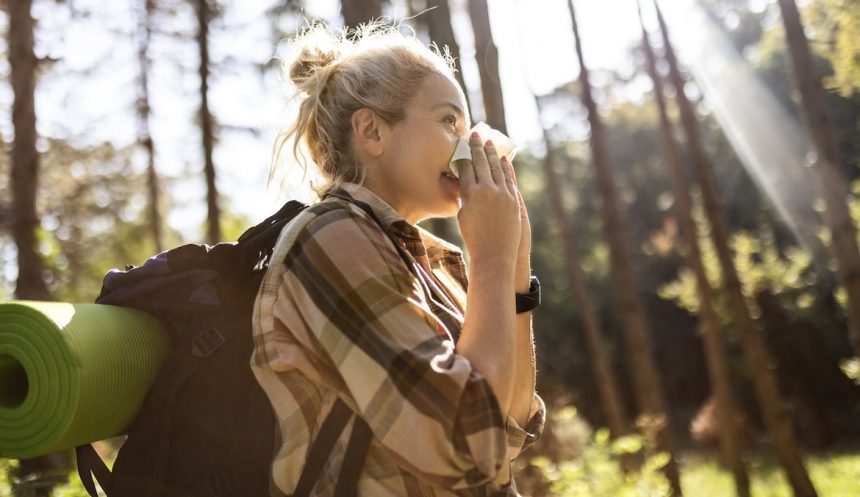It’s that time of year again, folks. The time where you always seem to ask yourself: Why are my allergies so bad right now? The itchy, sneezy, watery-eyed mess you become with the change of the seasons is often tied to whatever is blooming outdoors. In spring and fall, for example, pollen and ragweed counts are high, which can make your allergy symptoms worse during these times of year. But what does it mean if your allergies feel worse this year than ever before? Truth is, allergy symptoms can vary a lot from one year to the next, says Jen Caudle, DO, a family medicine practitioner in Washington Township, New Jersey. A lot of it has to do with weather-related stuff, but lifestyle habits can also play a role, too.
Here, we’ll dive into the most common allergy culprits right now, and what to do to feel your best—no matter the pollen count. Related Stories
Environmental triggers
“Seasonal allergy symptoms tend to flare up in the spring and the fall,” Dr. Caudle says. That said, not every single day throughout a given season will feel the same. Shifting weather and other factors can change how much of an allergen is in your environment, which can affect your symptoms, per the American College of Allergy, Asthma, & Immunology (ACAAI). Some of these factors can include the following:
- Time of day: Pollen counts tend to be the worst in the morning.
- Wind: Pollen gets blown around more on dry, windy days. When there’s no wind, pollen counts are lower.
- Rain: The rain washes pollen and other allergens away, so pollen counts are lower after a shower.
- Heat and humidity: Mold tends to thrive in warm, sticky temps. Exposure to things like smoke or strong odors might set off your symptoms or make existing symptoms worse, Dr. Caudle says.
Seasonal variations
Some allergy seasons are just worse than others, TBH. It all comes down to whether it’s warm or cool, dry or rainy, and so on. If the winter’s been pretty mild, you can bet that plants will start pollinating earlier, which translates to spring symptoms flaring up sooner. Rain in the spring isn’t great for allergies either. It encourages plants to sprout up bigger and faster and encourages the growth of mold, both of which can make symptoms more intense, the ACAAI notes.
Climate change
It’s not your imagination: Allergy seasons are generally more hellish today than they used to be. “Seasonal allergies are most commonly caused by pollen,” Dr. Caudle says. And the changing climate has led to pollen seasons starting 20 days earlier, lasting 10 days longer, and featuring 21 percent more pollen in recent years compared to 1990, according to the National Institute of Food and Agriculture. In other words, the more our climate fluctuates over the years, the worse (and more unpredictable) allergy seasons may become.
Lifestyle triggers
Certain habits you might not think twice about can affect your allergen exposure, and therefore, the severity of your symptoms. Some common ones include the following, per the Mayo Clinic and the American Academy of Allergy Asthma & Immunology (AAAAI):
- Doing yard work or gardening on days when pollen counts are high
- Exercising early in the morning, when pollen counts are high
- Letting pollen into your living space by opening the windows or not changing out of your clothes when you come inside
- Running a humidifier too high (above 50 percent humidity) or not cleaning the humidifier per the manufacturer’s instructions
To read the full article, visit: here






